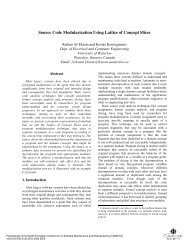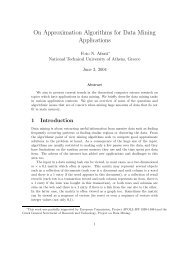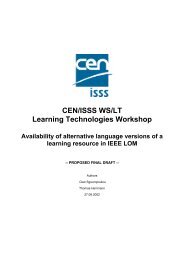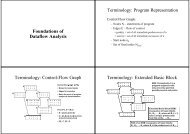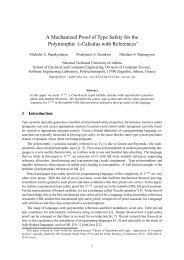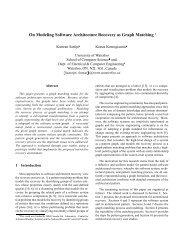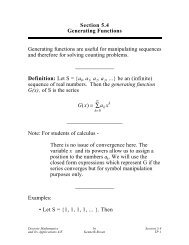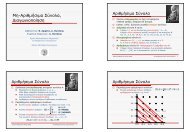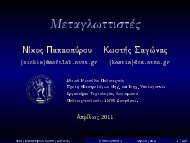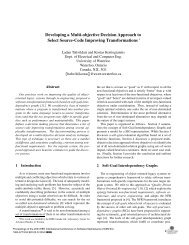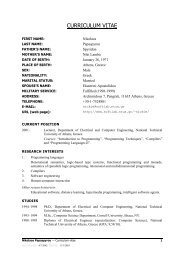Manual
Manual
Manual
You also want an ePaper? Increase the reach of your titles
YUMPU automatically turns print PDFs into web optimized ePapers that Google loves.
54 Bison 2.3<br />
• Your macro should parenthesize its arguments, if need be, since the actual arguments<br />
may not be surrounded by parentheses. Also, your macro should expand to something<br />
that can be used as a single statement when it is followed by a semicolon.<br />
3.7 Bison Declarations<br />
The Bison declarations section of a Bison grammar defines the symbols used in formulating<br />
the grammar and the data types of semantic values. See Section 3.2 [Symbols], page 42.<br />
All token type names (but not single-character literal tokens such as ’+’ and ’*’) must<br />
be declared. Nonterminal symbols must be declared if you need to specify which data type<br />
to use for the semantic value (see Section 3.5.2 [More Than One Value Type], page 46).<br />
The first rule in the file also specifies the start symbol, by default. If you want some other<br />
symbol to be the start symbol, you must declare it explicitly (see Section 1.1 [Languages<br />
and Context-Free Grammars], page 11).<br />
3.7.1 Require a Version of Bison<br />
You may require the minimum version of Bison to process the grammar. If the requirement<br />
is not met, bison exits with an error (exit status 63).<br />
%require "version"<br />
3.7.2 Token Type Names<br />
The basic way to declare a token type name (terminal symbol) is as follows:<br />
%token name<br />
Bison will convert this into a #define directive in the parser, so that the function yylex<br />
(if it is in this file) can use the name name to stand for this token type’s code.<br />
Alternatively, you can use %left, %right, or %nonassoc instead of %token, if you wish<br />
to specify associativity and precedence. See Section 3.7.3 [Operator Precedence], page 55.<br />
You can explicitly specify the numeric code for a token type by appending a decimal or<br />
hexadecimal integer value in the field immediately following the token name:<br />
%token NUM 300<br />
%token XNUM 0x12d // a GNU extension<br />
It is generally best, however, to let Bison choose the numeric codes for all token types.<br />
Bison will automatically select codes that don’t conflict with each other or with normal<br />
characters.<br />
In the event that the stack type is a union, you must augment the %token or other<br />
token declaration to include the data type alternative delimited by angle-brackets (see<br />
Section 3.5.2 [More Than One Value Type], page 46).<br />
For example:<br />
%union { /* define stack type */<br />
double val;<br />
symrec *tptr;<br />
}<br />
%token NUM /* define token NUM and its type */<br />
You can associate a literal string token with a token type name by writing the literal<br />
string at the end of a %token declaration which declares the name. For example:



